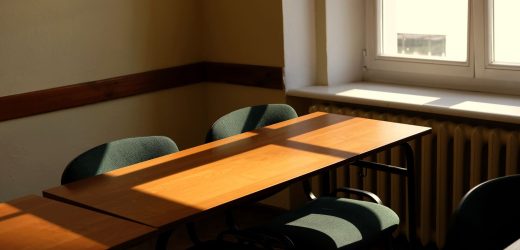Most would agree that the classroom is a place for discourse, reflection, and learning. But whose class is it? Who’s doing the learning? The teacher or the students? We submit it’s both—teacher and students learning from each other. Too often, faculty see themselves as the givers of information that students are there to receive. We think faculty need to be learning-followers as well as learning-leaders. And we believe students should accept both these roles as well.
Although alternating between these paradigms might seem cumbersome, perhaps even clumsy at first, this kind of oscillation encourages the reflection necessary for deep, meaningful learning. How do teachers move between the paradigms in ways that encourage students to move between them as well? We offer three suggestions: 1) learn to relinquish some of the learning power to students, 2) build quality relationships with students, and 3) engage students in reflection and discourse to deepen their learning.
Relinquish power
Teachers are used to having the lion’s share of power in the classroom. For the learning-leader this is necessary and natural—it’s also how the role has been traditionally defined. And it is as much the student’s responsibility to learn as it is the teacher’s responsibility to teach. However, it is also the responsibility of the faculty member to learn from students. The faculty member has to relinquish some of the power and allow the students to be in control and responsible for their own learning experience.
The faculty member’s role in this context becomes that of “guide on the side”—a facilitator of learning, a coach for excellence. The faculty member must move in the direction of becoming a resource for students—someone from whom they gather information in order to better understand the content. When faculty members relinquish some control, opportunities are opened for deeper discourse and discussion about complex topics. This also creates a space for students to apply their understanding authentically through case studies, reflection exercises, and such—all of which support and deepen the student’s understanding.
Relationships
Building positive, healthy relationships with students enables faculty members to learn about their students’ backgrounds, cultures, and personalities; and with that knowledge they can better advocate for students’ needs. Positive relationships make it easier to have those difficult conversations with students. They also create a sense of safety in the classroom, and that makes it easier for students to ask questions, challenge ideas, share experiences, and engage in thinking that helps them grow and develop.
Positive relationships with students can also benefit faculty members. As learning-leaders, students teach faculty members about how students relate to the content and what supports they need to learn it. The relationship that a faculty member creates with students opens avenues to honest conversations about the students’ needs, struggles, and successes. These relationships become shared experiences that allow each party to value the other’s perspectives, thoughts, and ideas. The knowledge that we impart to our students is important, but it is often the positive relationships that we have with them that facilitates the most important kinds of learning.
At times these relationships can transcend the classroom. They involve mentoring or coaching that sometimes extends beyond graduation. Whether they’re in the classroom or extend beyond it, these relationships can change the lives of students and their teachers.
Reflection
Engaging students through reflection and discourse means that students have a voice worthy of being heard and honored. It means that the teacher doesn’t have all the answers. There are multiple solutions to most problems, and sometimes the one suggested by a student just may be better than the one offered by the teacher. Our students are not here to simply absorb what we have to give them through our erudition.
Increasingly our constituents are demanding that we prepare our students to interpret, analyze, and assess the world around them. How can we expect them to develop those skills if we continually hold forth, without inviting our students to think deeply and share their own understandings? If they cannot join us in conversation about the complex issues inherent in the content we teach, are we serving them in the best ways possible? Reflection and discourse are the tools students need to creatively craft new models of understanding. Is there a better gift we can give them?
Final thoughts
As we prepare to go to class today, let’s carry with us the question with which we began: Whose classroom is it anyway? We believe that it’s a shared space but that the primary owners are our students. We empower them to claim their rightful space by relinquishing some of our power, by building quality relationships with them, and by giving them opportunities to reflect and engage in open discourse.
Contact Candice Dowd Barnes at CBarnes@uca.edu.





